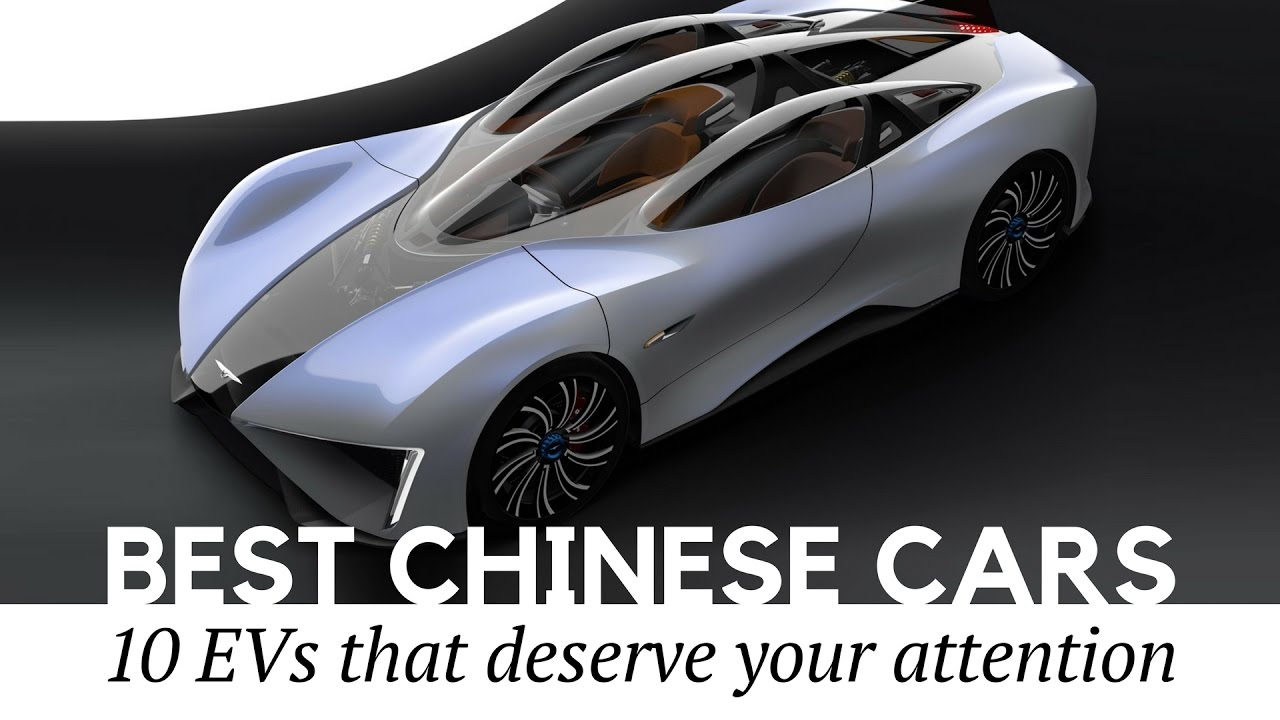A Comprehensive Analysis: The Future Of Chinese-Made Vehicles

Table of Contents
Technological Advancements in Chinese Automotive Manufacturing
China's automotive industry is experiencing a technological surge, fueled by significant investments in research and development. This technological prowess is pushing the boundaries of what's possible in vehicle manufacturing, making Chinese-made vehicles increasingly competitive on the global stage.
Electric Vehicle (EV) Dominance
China's commitment to electric vehicles is unparalleled. The country boasts the world's largest EV market, creating a fertile ground for innovation. This massive domestic demand is driving advancements in battery technology, charging infrastructure, and electric motor design.
- Government subsidies fueling EV adoption: Generous government incentives have significantly accelerated the adoption of electric vehicles in China, creating a massive market for domestic manufacturers.
- Massive domestic EV market driving innovation: The sheer size of the Chinese EV market fosters intense competition, pushing manufacturers to constantly improve battery range, charging speeds, and overall vehicle performance.
- Collaborations with international tech companies: Chinese automakers are actively collaborating with global tech giants, leveraging their expertise in software, artificial intelligence, and connectivity technologies.
- Focus on affordable EV options: A key strategy for Chinese EV makers is to offer affordable and accessible electric vehicles, making this technology available to a wider segment of the population.
Autonomous Driving Technology
The development of autonomous driving technology is another area where China is making significant strides. Chinese companies are heavily investing in artificial intelligence (AI), machine learning, and sensor technology to develop self-driving vehicles.
- Investment in AI and machine learning: Massive investments in AI and machine learning are enabling the development of sophisticated algorithms for autonomous driving systems.
- Development of sophisticated sensor systems: Chinese manufacturers are developing advanced sensor systems, including lidar, radar, and cameras, to provide vehicles with a comprehensive understanding of their surroundings.
- Partnerships with tech giants like Baidu and Alibaba: Collaborations with leading Chinese tech companies are accelerating the development and deployment of autonomous driving technologies.
- Testing and deployment of autonomous vehicles in Chinese cities: Chinese cities are becoming testing grounds for autonomous vehicles, providing valuable real-world data to refine these technologies.
Connectivity and Smart Car Features
Chinese manufacturers are integrating advanced connectivity features and smart technologies into their vehicles, creating a seamless and personalized driving experience.
- Integration of 5G technology: The adoption of 5G technology is enabling faster data speeds and enhanced connectivity for in-car infotainment and other features.
- Advanced infotainment systems: Chinese vehicles often feature sophisticated infotainment systems with large touchscreens, intuitive interfaces, and a wide range of apps.
- Over-the-air updates: Over-the-air software updates allow for continuous improvement and the addition of new features after the vehicle has been purchased.
- Integration with mobile apps and smart home devices: Seamless integration with smartphones and smart home devices enhances convenience and connectivity for drivers.
Expanding Global Market Presence of Chinese Auto Brands
Chinese automakers are no longer content with dominating the domestic market. They are aggressively expanding their global footprint, challenging established players in various regions.
Aggressive Export Strategies
Chinese carmakers are employing various strategies to expand internationally. This includes strategic partnerships, direct sales, and the establishment of overseas production facilities.
- Increased presence in European and Southeast Asian markets: Chinese brands are steadily gaining market share in Europe and Southeast Asia, showcasing their competitive products.
- Competitive pricing strategies: Offering competitive prices is a key strategy for penetrating new markets and attracting buyers.
- Focus on emerging markets: Developing countries offer significant growth potential for Chinese automakers, who are adapting their vehicles to suit local needs.
- Building brand recognition internationally: Significant investment in marketing and branding is crucial for building trust and recognition in new markets.
Focus on Emerging Markets
Developing economies present lucrative opportunities for Chinese automakers, who are tailoring their products to meet specific local demands.
- Adapting models to suit local preferences and infrastructure: Chinese manufacturers are modifying vehicle designs and features to suit the specific needs and preferences of different markets.
- Partnerships with local distributors: Establishing partnerships with local distributors helps navigate local regulations and better understand customer needs.
- Providing competitive financing options: Offering attractive financing options makes vehicles more accessible to buyers in emerging markets.
Overcoming Brand Perception Challenges
One significant challenge for Chinese automakers is overcoming perceptions of lower quality compared to established international brands.
- Investing in marketing and branding campaigns: Significant investments in marketing and branding campaigns are crucial for enhancing brand image.
- Highlighting technological advancements: Showcasing technological innovations helps to position Chinese vehicles as cutting-edge and competitive.
- Emphasizing quality control measures: Implementing robust quality control measures and highlighting them is vital for building consumer trust.
- Focusing on design and aesthetics: Improved design and aesthetics are vital for enhancing the appeal of Chinese-made vehicles.
Challenges and Opportunities for the Future
Despite the impressive progress, the future of Chinese-made vehicles is not without its challenges. Successfully navigating these hurdles will be crucial for continued growth.
Supply Chain Disruptions
Global supply chain volatility presents a significant risk to the Chinese auto industry. Reliance on imported components makes the industry vulnerable to disruptions.
- Dependence on imported components: Many Chinese automakers rely on imported components, making them susceptible to supply chain disruptions.
- Geopolitical risks: Geopolitical instability and trade tensions can severely impact the availability and cost of imported components.
- Impact of trade wars and tariffs: Trade wars and tariffs can significantly increase the cost of imported goods, affecting the competitiveness of Chinese vehicles.
Competition from Established Automakers
Chinese automakers face intense competition from established global brands with long-standing reputations and extensive distribution networks.
- Maintaining competitive pricing: Maintaining competitive pricing while ensuring profitability is a constant challenge.
- Differentiating products: Offering unique features and technologies is vital for standing out in a crowded market.
- Building strong brand equity: Building strong brand recognition and positive brand perception is crucial for long-term success.
Regulatory Hurdles and Government Policies
Navigating the complex web of regulations and government policies in different markets is another significant challenge.
- Meeting emissions standards: Meeting increasingly stringent emissions standards is crucial for gaining market access in many countries.
- Complying with safety regulations: Adhering to varying safety regulations in different markets is essential.
- Adapting to changing government incentives: Government incentives and policies can change rapidly, requiring adaptability and flexibility.
Conclusion
The future of Chinese-made vehicles is bright, propelled by technological innovation, ambitious global expansion strategies, and a strong commitment to electric vehicles. While challenges related to brand perception, supply chain resilience, and global competition remain, the potential for Chinese automakers to become major global players is undeniable. To stay informed about the latest developments in this dynamic industry, continue to follow our analyses of the future of Chinese-made vehicles and the evolving global automotive landscape. Understanding this rapidly changing market is key for investors, consumers, and industry professionals alike.

Featured Posts
-
 Is Ukraines Nato Aspiration Doomed Trumps Perspective
Apr 26, 2025
Is Ukraines Nato Aspiration Doomed Trumps Perspective
Apr 26, 2025 -
 Los Angeles Wildfires A Reflection Of Our Times Through Betting Markets
Apr 26, 2025
Los Angeles Wildfires A Reflection Of Our Times Through Betting Markets
Apr 26, 2025 -
 Karen Read A Chronological Overview Of Legal Proceedings
Apr 26, 2025
Karen Read A Chronological Overview Of Legal Proceedings
Apr 26, 2025 -
 Feeling The Mississippi Delta The Cinematography Of Sinners
Apr 26, 2025
Feeling The Mississippi Delta The Cinematography Of Sinners
Apr 26, 2025 -
 Is Gold A Safe Investment During Trade Wars Analyzing Bullions Performance
Apr 26, 2025
Is Gold A Safe Investment During Trade Wars Analyzing Bullions Performance
Apr 26, 2025
